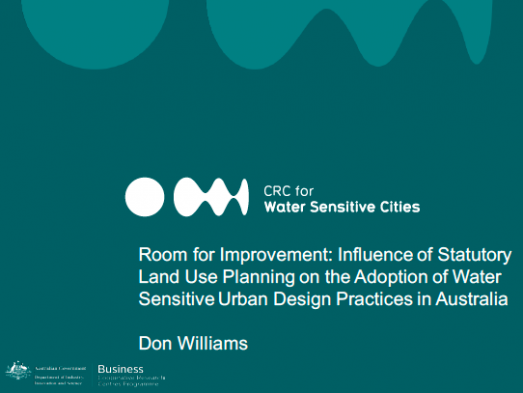Room for Improvement: Influence of Statutory Land Use Planning on the Adoption of Water Sensitive Urban Design Practices in Australia
Abstract
Regulation, including statutory land use planning law, has been seen as an important way to encourage the adoption of water sensitive urban design (WSUD) practices. Despite this, there are challenges in understanding how statutory land use planning influences the uptake of WSUD practices, and how planning frameworks could be redesigned, to better support WSUD.
The influence of statutory planning was investigated in a survey of water resource and planning professionals. The survey examined the degree to which statutory land use planning does influence WSUD practice; the importance of including quantitative targets in statutory planning requirements; the comparative influence of statutory land use planning at greenfield and infill sites; and how statutory land use planning influences four specific components of WSUD practice.
Identifying specific components of WSUD practice, and examining how statutory land use planning influences them, provided more detailed insights than previous studies, which typically considered WSUD as an undifferentiated whole.
The survey results indicate that statutory land use planning does encourage the adoption of some WSUD practices, while suggesting ways to refine planning frameworks, so they better support the implementation of WSUD. A key finding was that current Australian statutory land use planning frameworks do not adequately recognise WSUD as a concept that encompasses the whole urban water cycle, and that strongly links water management and urban design.
Presented by Donald Williams at Stormwater Conference 2016, Gold Coast September 29 August - 2 September 2016
Citation
Williams, D. 2016, Room for Improvement: The Influence of Statutory Land Use Planning on the Adoption of Water Sensitive Urban Design Practices in Australia, Stormwater Conference.
